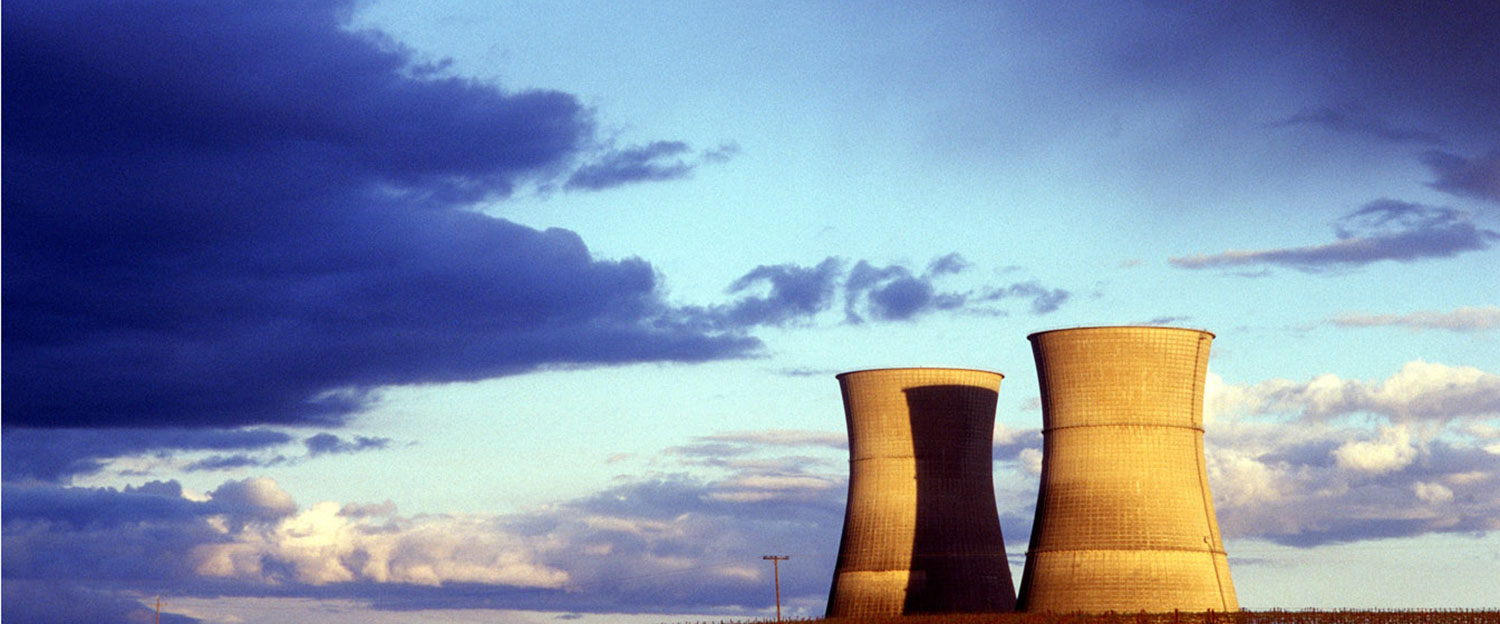Nuclear power 101
Learn how nuclear energy works
What is nuclear energy?

The image at right illustrates the nuclear fission process that occurs inside a reactor at a molecular level. Most nuclear power plants operating today use uranium fuel to produce electricity through a process called fission—the splitting of uranium atoms which releases energy that produces heat.

Uranium fuel consists of small, hard ceramic pellets that are packaged into long, vertical tubes. Bundles of this fuel are inserted into the reactor.

Cutaway of a BWR fuel bundle – uranium pellets go in the vertical tubes

A single uranium pellet, slightly larger than a pencil eraser, contains the same energy as a ton of coal, 149 gallons of oil, or 17,000 cubic feet of natural gas. Each uranium fuel pellet provides up to five years of heat for power generation.
Because uranium is one of the world’s most abundant metals, it can provide fuel for the world’s commercial nuclear plants for generations to come.
Nuclear energy supplies about 10% of the world’s electricity and approximately 20% of the electricity in the United States. It also makes up 26[DD(GPc1] % of clean electricity produced globally and ~50% in the United States.
A total of 32 countries worldwide are operating 413 nuclear reactors for electricity generation, with another 56 under construction. The average capacity of the world’s operating reactors is just under 900 MW.
With the high costs and construction times required for large nuclear plants, there is beginning to be a transition to smaller reactors called small modular reactors or SMRs. Generally speaking, SMRs have capacities between 20–300 MW.
How does a boiling water reactor work?

While both reactors heat water to produce steam, in a BWR the steam created in the reactor pressure vessel (RPV) goes directly to the steam turbine generator (STG). In a PWR, steam is not created in the RPV. The hot water from the RPV is used to produce steam in the steam generator (S/G), which then goes to the STG.

slide to see more
| Characteristics | BWR | PWR |
|---|---|---|
| Heat Generation | Direct Cycle | Indirect Cycle |
| Core Physics & Fuel | Similar | Similar |
| Thermal-Hydraulics | Two Phase Flow | Single Phase Flow |
| Operating Reactor Pressure | Low | High |
| Reactivity Control | Control Rod Based | Control Rod and Chemistry Based |
| Chemistry | Pure Water | Borated Water |
| Secondary | Contaminated | Normally Non-Contaminated |
| NSSS Components | Few | Many |
| Load Following | Easier | Complex |
| Life Cycle Economics* | Better | Poorer |
| Operation and Maintenance Costs** | Lower | Higher |
| Depressurization | Fast | Slow |
| Loss of Coolant Accident (LOCA) | No Core Uncovery | Core Uncovery Postulated |
| Core Damage Frequency | Improved | Acceptable |
How does nuclear energy help the environment?

Power plants don’t burn any materials; so, they produce no combustion by-products. Nuclear power plants avoid more than 471 million metric tons of carbon emissions each year. Because they don’t produce greenhouse gases, nuclear plants help protect air quality and mitigate climate change.
What happens to the spent fuel?

While all energy sources produce waste, nuclear energy is the only industry that regulates and safely stores its waste. As an example, in the U.S., most of the nation’s spent fuel is safely and securely stored at more than 70 reactor sites across the country.
If all of the electricity used by a human being throughout their entire life came from nuclear energy, the amount of waste created would fit in a soda can. Furthermore, new reactor technologies are making it possible to reuse fuel once considered “used up” to continue producing electricity.
In fact, nuclear’s safety record is one of the best as compared to other generation technologies.


